What does RGBIC stand for in LED strip lights? Strips have revolutionized the way we illuminate and decorate spaces, offering a dynamic range of colors and effects. Among the various technologies enhancing the versatility of strips, RGBIC stands out as a key feature. In this article, we’ll delve into what RGBIC strip light stands for and how it contributes to the vibrant world of LED lighting.
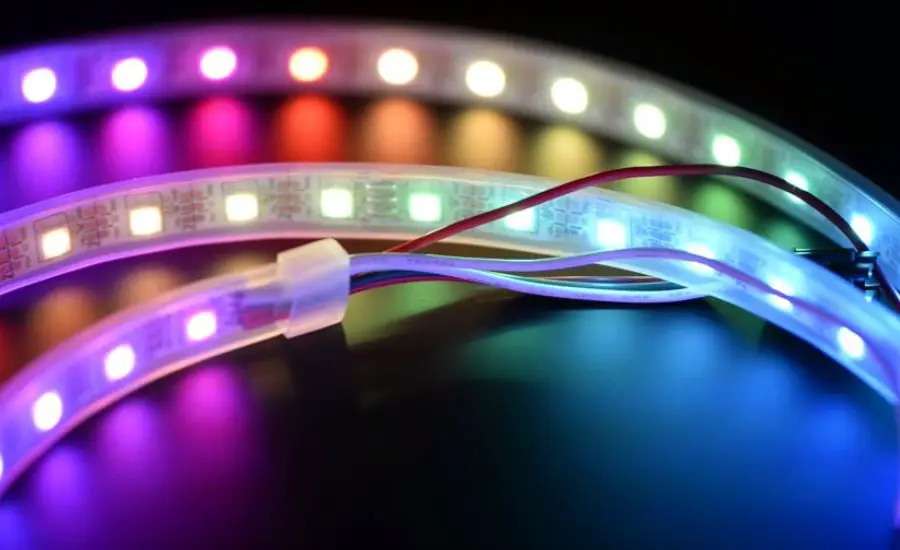
What are RGBIC LED strips?
The RGBIC means “Red, Green, Blue, Independent Control.” This innovative technology allows users to control individual segments or sections of the LED strip light independently, enabling a more precise and customizable of display multiple colors.
In contrast to conventional RGB LED strip lights where the entire strip changes color simultaneously, RGBIC strip light brings a new level of flexibility and creativity to lighting design.
How RGBIC Works?
RGBIC technology divides an LED strip into distinct segments, each containing red, green, blue.
These segments can be controlled separately, allowing users to create dynamic color patterns, gradients, and even pixelated displays.
The autonomous control of each segment is typically facilitated by a controller or a smart lighting system.
Customizable color zones
RGBIC enables users to divide the strip into zones and assign different colors to each zone. This level of customization is ideal for creating visually stunning effects, such as color-chasing, flowing gradients, and animated patterns.
Dynamic lighting results
With RGBIC LED strip light can produce dynamic and animated lighting results. These effects range from simple color transitions to more intricate patterns, making it a popular choice for accentuating architectural features, home interiors, and entertainment spaces.
Enhanced ambiance control
Homeowners and businesses appreciate the ability to fine-tune the ambiance of space using RGBIC LED lights. Whether it’s a relaxing evening, a lively party, or a productive work environment, RGBIC LED strip lights allow for instant adjustments to match the desired mood.
Smart integration
Many RGBIC LED strip light is compatible with smart home techniques, enabling users to manage lighting using voice instructions or mobile applications. This integration adds a layer of convenience and modernity to lighting solutions.
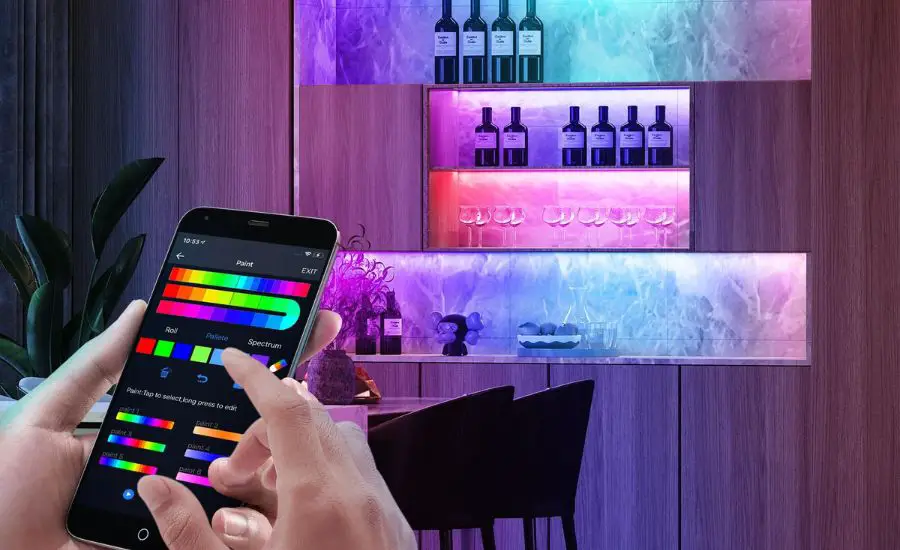
Applications of RGBIC LED strip lights
Decor house. Strip lights are a popular selection that emphasizes specific features in homes. They have the potential to be used behind furniture, along ceilings, or under cabinets to add a touch of color and style to living spaces.
Entertainment spaces. The RGBIC LED strip lights are commonly used in house theaters, gaming rooms, and entertainment centers.
The ability to synchronize lighting results with audio or video content enhances the overall immersive experience.
Commercial settings. RGB (red, green, blue) strip lights discover practical uses in retail displays, restaurants, and other commercial spaces the location of dynamic lighting can attract attention and establish a unique atmosphere.
What is the difference between RGB and RGBW lights?
RGB (red, green, blue) and RGBW lights differ primarily within the spectrum of colors they can generate.
RGB LED strip lights
These lighting fixtures consist of three color channels — red, green, and blue. Through the combination of different intensities of blending these three colors, you can generate an extensive array of hues. However, RGB LED strip lights might struggle to have warm white lights because it’s created by mixing the three colors, which can result in a slightly tinted white.
RGBW lights
Apart from the three primary colors, RGBW lights include a true warm white channel. This warm white allows for the creation of true white lights independently of the RGB strip lights channel. The inclusion of a warm white channel enhances the overall precision in color representation and brightness of the lighting system.
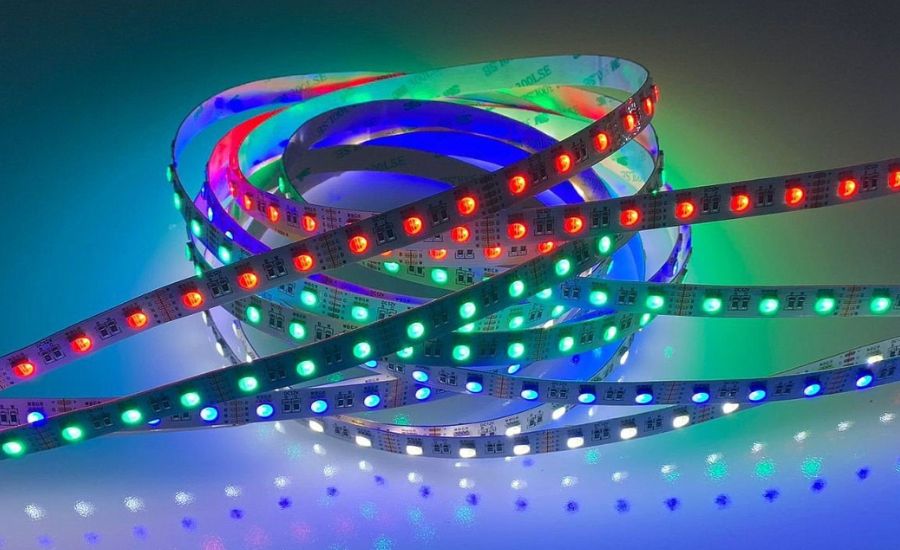
Why can’t you cut RGBIC strip lights?
RGBBIC strip lights often come with predefined segments or zones where each segment contains its own red, green, and blue. Cutting RGB and RGBIC LED strip lights can disrupt the balance of the control integrated circuit, affecting the autonomous control functionality.
When you cut RGB and RGBIC LED strip lights, you might lose the capability to separately control the color and effects of the specific segment that was cut. Therefore, it’s generally recommended to follow manufacturer guidelines and not cut RGB and RGBIC strip lights unless specified otherwise.
What does RGBCW mean?
RGBCW means “Red, Green, Blue, Cold White.” Within the context of illumination terminology:
- RGB. Red, Green, and Blue, as mentioned earlier, represent the main color channels used to create a variety of colors.
- CW. Cold White refers to a true white channel that produces cool or bluish-white lights. Having a separate white channel allows for more accurate and adjustable warm white lights, addressing the challenge of creating a pure white color in RGB illumination systems.
RGBCW LED strip lights are adaptable, providing an extensive range of hues along with the option for clean and bright white lights.
These types of strips are frequently used in various applications where both dynamic color effects and high-quality white lights are desired, such as in architectural lighting and certain home or commercial environments.
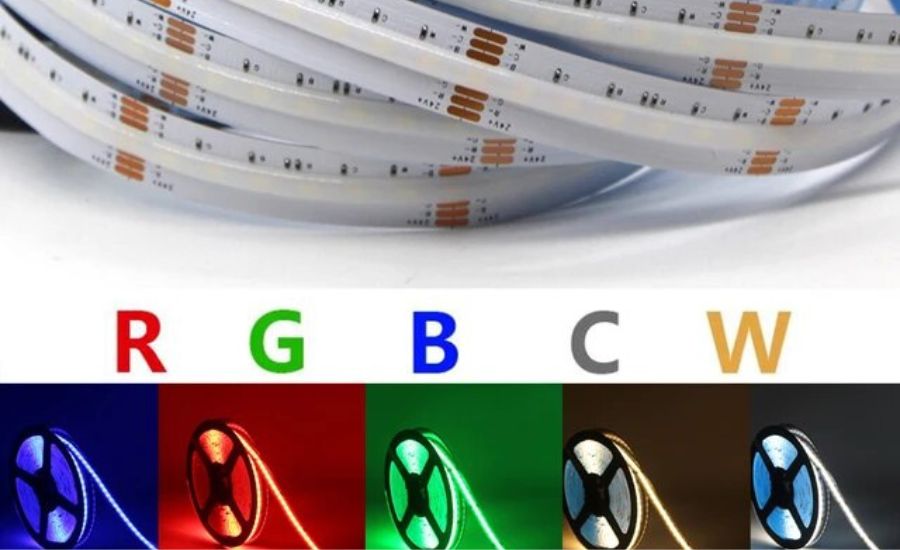
RGB vs. RGBW
RGB and RGBW refer to different types of LED strip lighting based on the color channels they use. Let’s compare RGB and RGBW LED strip lights:
RGB LED strip lights
Color channels. RGB LED strip lights have three color channels: red, green, and blue. By modifying the strength of each channel, various colors can be produced.
Blending of colors. RGB strip lights can generate a broad variety of colors by blending different combinations of red, green, and blue light.
However, achieving pure daylight can be challenging, as it’s typically generated by mixing all three colors, resulting in a potentially tinted white.
Common programs. RGB strip lights are widely used for ornamental illumination, accentuating areas with dynamic and lively hues. RGB lights are popular in recreational spaces, social gatherings, and architectural illumination.
RGBW LED strip lights
Color channels. RGBW LED strip lights, in addition to the red, green, and blue channels, include a true white channel.
White light. The separate white channel permits the autonomous control of white lights. This results in a truer and more accurate white color, without the tint that might occur in RGB strip lights.
Enhanced universality. RGBW LED light strips provide the flexibility of both dynamic colored lighting and high-quality, adjustable white lights. This makes them suitable for a wider array of uses, including general background illumination in homes and commercial spaces.
Use cases. LED strips are frequently used in various where both colorful lighting results and quality white lighting are desired. They are often chosen for architectural illumination, lighting specifically designed for tasks, and scenarios where clean white lights are essential.
The primary difference between the RGB light strip and LED strips is the presence of a true white channel in RGBW strips, allowing for more precise and adaptable daylight options.
The decision between RGB LED strips and RGBW depends on the specific illumination requirements and the desired balance between colorful effects and high-quality white lighting.
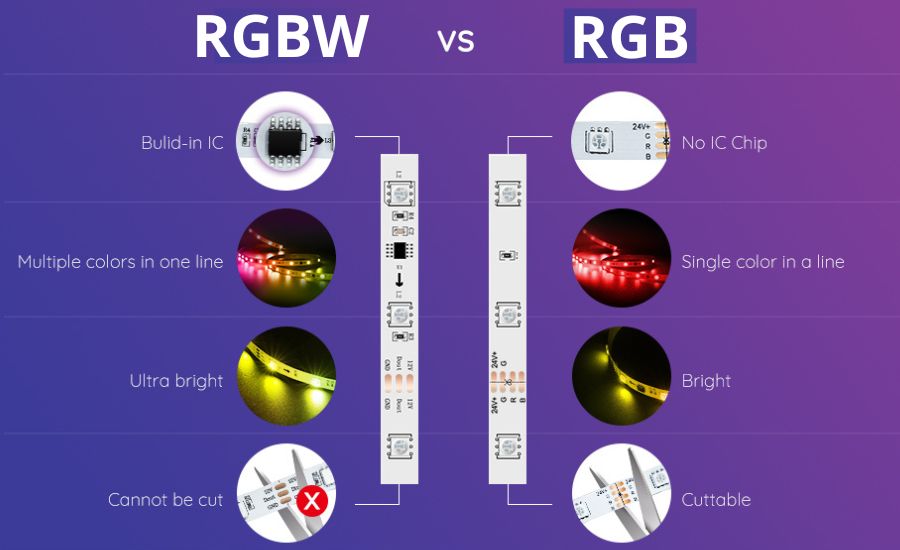
RGBW vs. RGBWW
RGBW and RGBWW are types of control LED strips that include true white channels, but they differ in the color temperature emitted by their white light.
RGBW LED strips
White light. LED strips have a true white channel, allowing for autonomous control of white lights. The white lights produced tend to be a cool or neutral white.
Programs. RGBW LED strips are adaptable and appropriate for various uses where both dynamic colored lighting and neutral white lights are desired. They are frequently used in architectural illumination, focal lighting, and other scenarios in situations where precision in color is crucial and flexibility is vital.
RGBWW LED strips
White light. RGBWW LED strips also include a true white channel, but the daylight produced tends to be warmer in correlated color temperature compared to RGBW strips. Warm white light has a yellowish or amber tint.
Programs. RGBWW strips are especially fitting for environments where a cozy or ambient atmosphere is desired. They work well in residential settings, creating a warm and inviting ambiance.
In summary, while both RGBW and RGBWW strips suggest the flexibility of dynamic colored illumination and daylight regulation, the key distinction lies in the hue intensity of the white lights.
RGBW produces cooler or neutral daylight, while RGBWW LED strip lights generate warmer, more amber-toned daylight.
The selection between RGBW and RGBWW LED strip lights depends based on individual lighting preferences and the desired warm and cozy atmosphere for a given space.
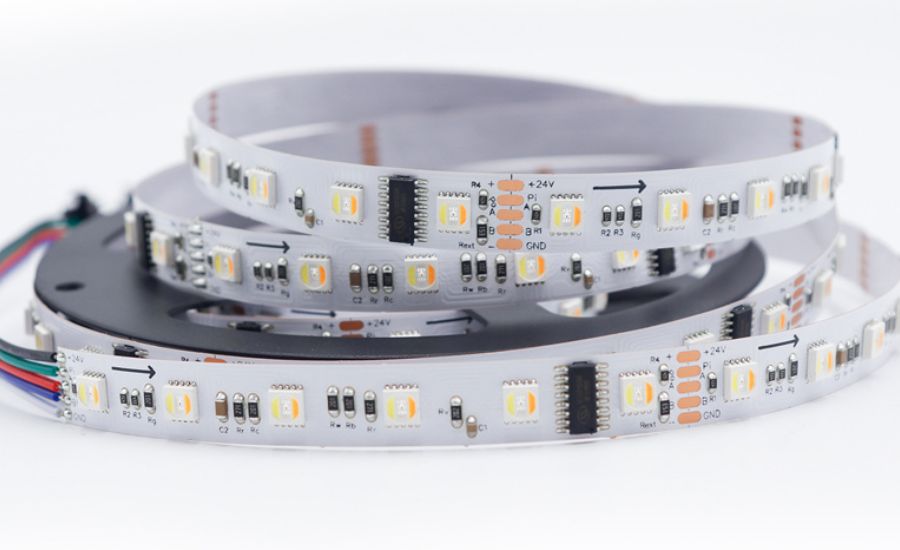
Selecting of LED strip lights
Selecting the appropriate type of strip depends on your particular lighting requirements, preferences, and the atmosphere you aim to establish. Here’s a breakdown of various aspects to take into account when selecting between RGB LED strips, RGBW, RGBIC, RGBWW, and RGBCCT LED strip lights:
| Characteristics | RGB strip lights | RGBW | RGBIC strip lights | RGBWW strip light | RGBCCT LED strip |
| Color output | Ideal for achieving lively and dynamic color displays. Suitable for decorative and focal illuminations where a broad range of hues is desired. | Offers the same versatile color choices as RGBW strips but with the addition of a true white channel for more accurate and versatile white illuminations. | |||
| Remote control | All RGB strip lights change color simultaneously. | Allows remote control of the white channel and RGB, providing more flexibility in lighting results. | Allows for segment-by-segment control, enabling dynamic and customizable lighting results. | ||
| Alternatives in white lighting | Produces cool or neutral daylight. | Produces warmer daylight with a yellowish or amber tint. | Offers both cold and warm white options, providing a complete spectrum of white light temperatures. | ||
| Applications | The best for decorative illuminations, accentuating areas with dynamic and vivid hues. | A versatile option applies to various uses, including architectural lighting and scenarios where both colored and daylight are desired. | It is ideal for more intricate and dynamic lighting results, such as color-chasing, flowing gradients, and pixelated to display multiple colors. | Particularly suitable for creating a warm and inviting atmosphere in residential settings. | Offers a comprehensive a versatile answer for diverse white light temperatures, adapting to various moods and activities. |
Smart integration
Check if the LED strip light is compatible with smart home systems if you want to control them using voice commands or mobile apps.
Budget
RGB strip light is often more budget-friendly compared to those with additional white channels or advanced control features. Consider your budget constraints when making a choice.
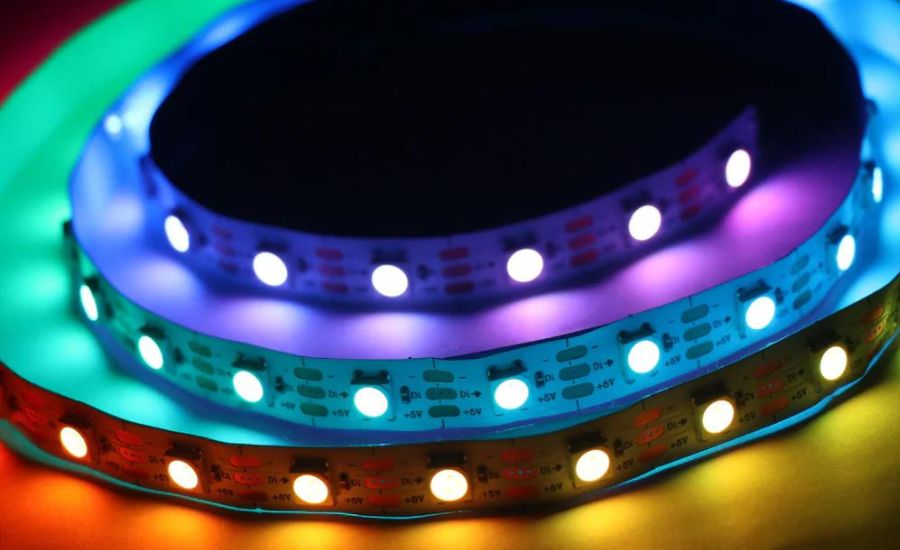
Types of strip lights
In addition to RGB, RGBW, RGBIC strip lights, RGBWW, and RGBCCT LED strip lights, there are several other types and variations available, each with its unique features and applications. Here are some additional types of strips.
Single-color LED strip
This strip emits a single color, such as white, red, green, or blue. They are often used for basic lighting applications and are less complex than the RGB lights variant.
Dual-color LED strip light
This strip has two color channels, allowing users to switch between two colors. Common variations include warm white/cool white or warm white/daylight.
Digital LED strip light
Digital LED strip light, also known as addressable LED strip light, allows for individual control of each LED. This enables more complex and programmable lighting effects, such as animations and patterns.
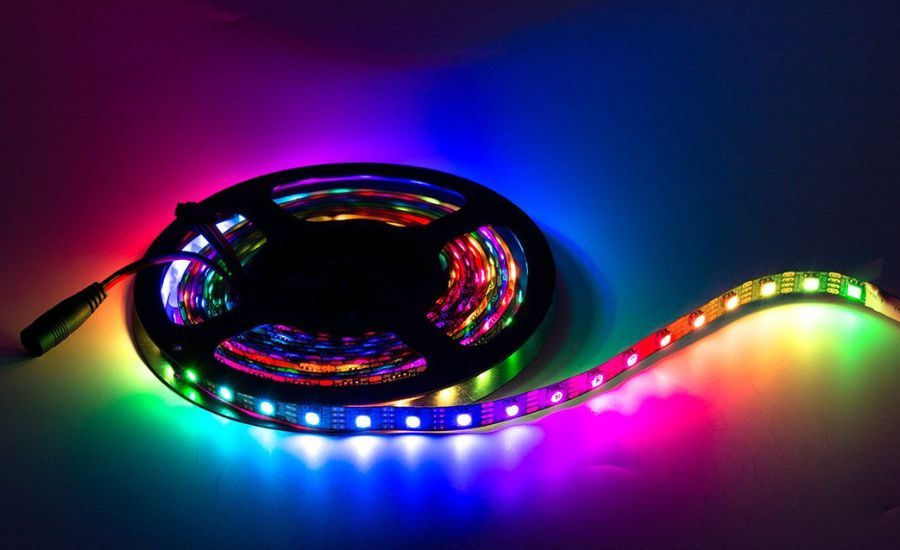
Conclusion
In the world of LED strip, RGB and RGBIC stands as technological advancement that brings a new level of customization and control. As the demand for personalized lighting solutions continues to grow, Technology RGBIC strip lights are likely to play a pivotal role in shaping the future of LED lighting design.
Whether for home decor, entertainment, or commercial applications, RGBIC LED strip lights offer a vibrant canvas for creativity and expression.

My strong expertise is illuminating spaces. With a keen eye for detail and a passion for transforming environments through lighting, my dream is to leave indelible mark on the world of light design. Below are few facts of my biography, highlighting career and hobbies. Click here to contact me.